Este post também está disponível em:
Português
English
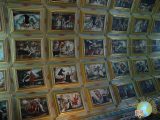
The Church of Santa Teresa D’Ávila is located in Pátio do Carmo and is part of the Recife Sagrado, right next to the Basilica of the same name.
Next to the Basilica in Carmo in Recife, we find a beautiful church, whose architectural design of the pediment resembles the same Basilica, is the Church of Santa Tereza da Ordem Terceira do Carmo – Built between 1700 and 1837. One of the most beautiful Baroque churches in Pernambuco.
Overshadowed by its famous neighbour and tucked away at the end of a corridor of beautiful palm trees, it unfortunately goes unnoticed by most passers-by hurrying through the centre of Recife.
The construction of the Church of St Teresa of Avila of the Third Order of Carmel was completed in 1710 (consecrated only in 1835) after ten years of construction.
Compared to the eighty years of the Carmel Basilica, it took very little time to complete. This was only thanks to the willingness of the members of the Third Order of Carmel to spend all the necessary resources to build it in the shortest possible time and with the utmost luxury.
It is worth mentioning that they were merchants, mill owners, etc.
The Third Order of Carmel is composed to this day by lay people, that is, people who are not part of the priesthood (there are no nuns or friars).
Video History and Architecture of the Church of St Teresa D’Ávila of the Third Order of Carmel.
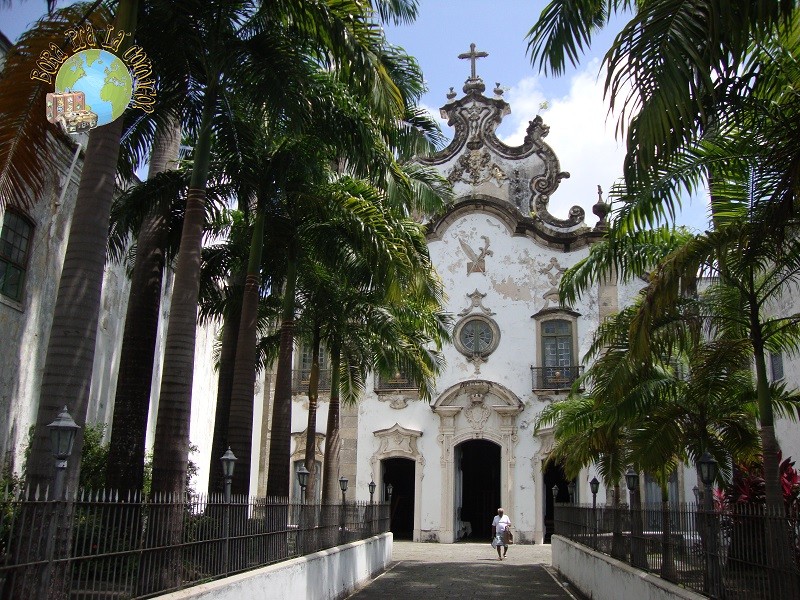
Igreja de Santa Teresa D'Ávila da Terceira Ordem do Carmo
Its patron saint, St Teresa of Avila (or St Teresa of Jesus), was born in the province of Avila, Kingdom of Castile (Spain), and lived between the years 1515 and 1582.
She lived a life of exemplary dedication to prayer, played a key role in the reform of the Order of Carmel and was one of the most outstanding writers on church-related topics.
Gifted with an exquisite talent, she described her own personal experiences to explain the four steps of prayer: recollection, stillness, union and rapture.
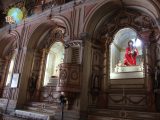
Despite such dedication, St Teresa of Avila was persecuted by the Catholic Church’s Inquisition for the way she expressed her ideas and for speaking of “spiritual orgasm” in her writings. There are indications that she was not killed due to her father’s strong influence with the king.
Visiting the Church of Santa Tereza D’Ávila of the Third Order of Carmo (and what a long name!) gives us the opportunity to see the largest collection of paintings in honour of the saint in the world.
Like the other churches of this period, its architectural style is Baroque in its final phase (full of the characteristic rococo flourishes).
The paintings in the nave of the Church of Saint Teresa of Avila of the Third Order of Carmel are by João de Deus Sepúlveda (18th century), while those in the entrance are by the freed Pernambuco slave Manoel de Jesus Pinto. Blacks were not allowed to attend the church.
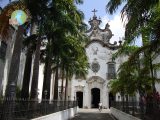
The nave of the church is also home to a rare crystal chandelier, but its greatest highlight are the paintings on the church ceiling. There are some rarities, such as a painting of the Saint in intimate clothing (for the time, of course) and two others of the “bad thing”. Care to look?
The side altars represent six steps of the Passion of Christ. There is an important detail in the gilding technique.
Unlike the Golden Chapel, where gold leaf was applied, here they “blew” gold dust over the fresh paint.
The high altar displays the images of Jesus Christ and Our Lady of Mount Carmel in the centre, St Joseph “in boots” (a rarity) on the right and the patron saint St Teresa on the left.
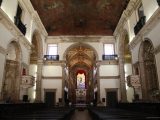
Did you notice anything different about the picture of Jesus? He has his head turned to the right and his features are quite pained in his last moment of life. There are only two images depicted in this way in the world (the other is in Ouro Preto).
The side niches present the images of St Elias, spiritual father of all Carmelites, and his follower St Elisha.
It is difficult to distinguish the two images because of their similarity (St Elias is the one on the left right next to Jesus). The smaller images in the lower part are of John Paul II and St Therese.
The left side of the altar features a painting of one of the most important passages of her life: the transverberation of St Teresa’s heart.
The sacristy of the Church of St Teresa D’Ávila of the Third Order of Carmel is closed to visitors, but it is worth insisting on visiting. Besides the 18th century colonial furniture, there are beautiful images of St Teresa of Jesus, Our Lady of Solitude and St Joseph (from left to right) …… and the reproduction of the most important passages of the life of St Teresa of Avila.
Finally, the area next to the church is occupied by tombs of important members of the Third Order of Carmel, such as the Baron of Casa Forte and others.
Tourism and Travel Guide to Recife, Pernambuco and the Northeast
Religious Tourism and Sacred Recife
Bahia Tourism Guide



















